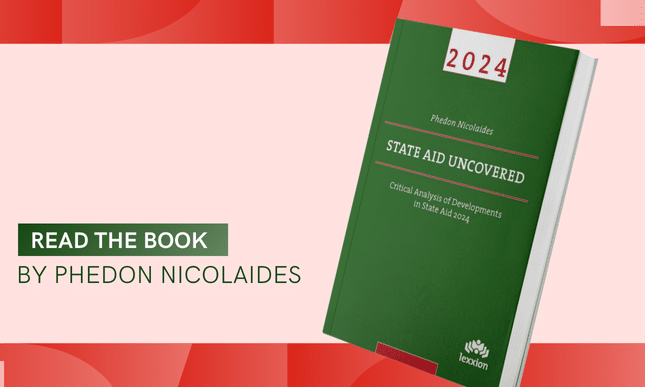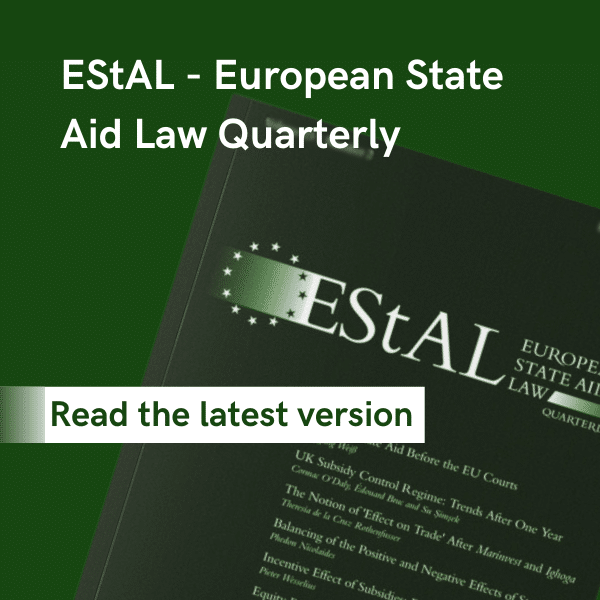
Introduction
The decarbonisation of industry receives the second largest amount of environmental aid after reduction of environmental and energy taxes. Across different industrial sectors, the decarbonisation of steel production has probably attracted the largest amount of aid.
Recently, Sweden notified an individual measure to support investment in decarbonisation at SSAB, a steel manufacturer. The measure was approved by the Commission in decision SA.1096401. SSAB’s steel works are the single largest source of greenhouse gas [GHG] emissions in Sweden. The SSAB group qualifies as a large enterprise.
The project
The SSAB project aims to reduce GHG emissions by converting the current production process from the blast furnace/basic oxygen furnace [BF-BOF] to electric arc furnace [EAF] in an integrated electric steel mill that will produce “green” steel. In addition, by producing green steel, the SSAB project is expected to contribute to decarbonising the value chain of downstream industries using that steel in their operations [e.g. car manufacturing].
Effect of aid
According to the Commission decision, “(31) in the absence of the measure, SSAB would continue operating the BF-BOF route and the existing secondary metallurgy and continuous casting processes until at the earliest 2032 and only then invest in the transition to an integrated electric steel mill. Thanks to the aid, such transition can take place already in 2029, leading to GHG emission savings during the years between 2029-2032.” At this point, footnote 22 further explains that “Sweden expects that developments in the regulatory framework, including the higher costs linked to GHG emissions, are likely to make the SSAB project on market terms financially viable in 2032 at the earliest.”
In other words, after 2032, emission standards will become stricter leading to an increase in the cost of permits for GHG emissions. As a result, SSAB will have to invest is less polluting technology. But these expected developments also beg the question why the regulatory changes and the increase in the price of emission permits are not brought forward in order to force more polluters, not just SSAB, to reduce their GHG emissions? Perhaps the cost of expedited transition is too high. The Commission decision is silent on this issue.
The project will not result in any increase of production capacity of SSAB. The SSAB plant holds an environmental permit for producing up to 2.5 million tonnes of finished products per year. The Swedish authorities have confirmed that the permit will not be amended and, therefore, the project cannot lead to increased production. This makes it easier to calculate the necessary amount of aid that is strictly needed for decarbonisation, rather than expansion of production.
Because the project will not increase output, the Commission also found that it would comply with the “do no significant harm” principle [Article 17 of Regulation 2020/852 on the framework for sustainable investment]. The avoided emissions are expected to be 1-10 million tonnes of CO2, which is the difference between the factual situation with the aid and the counterfactual scenario without the aid in the period 2029-2032. As explained above, after 2032 SSAB will have to reduce its emissions.
Interestingly, the Swedish authorities also took into account that the project would cause an increase in indirect GHG emissions of 0.2-0.3 million tonnes of CO2 caused by an increase in the consumption of electricity, even though most of it would be generated by renewable sources of energy. These numbers indicate that the increase in indirect emissions is very small in relation to the reduction of direct emissions.
Amount and incentive effect of the aid
The aid amount is EUR 128 million and will be granted through the Just Transition Fund [Regulation 2021/1056]. The JTF is an EU fund under shared management for investments in the territories most affected by the transition to a climate-neutral economy. JTF resources are earmarked for activities identified in the JTF national programmes of Member States. Member States retain discretion in the selection of beneficiaries. Therefore, JTF resources are considered to be state resources in the meaning of Article 107(1) TFEU.
The amount of aid in discounted terms corresponds to the net extra costs [which are equal to funding gap] of the project. The net present value [NPV] of the project without the aid is EUR minus [100 – 200] million. The NPV is the sum of the discounted future positive and negative cash flows generated by the investment over its lifetime [2024-2052] in the factual and counterfactual scenario. The cash flows of the factual and counterfactual scenario are discounted at the company’s weighted average cost of capital [WACC] which is 10.2%.
Factual scenario
The total costs in the factual scenario, encompassing capital expenditure [i.e. investment], operating expenditure [e.g. raw materials, energy, variable expenses, EU ETS allowances, personnel and ongoing maintenance] and income taxes, amount to EUR [40,000 – 50,000] million in nominal terms in period 2024-2052. This is equal to EUR [10,000 – 20,000] million in discounted terms at the rate of WACC. Please note that certain operating costs will decrease as a result of lower GHG emissions which will require fewer emission permits.
The total revenue over the period 2024-2052 is estimated to be EUR [40,000 – 50,000] million in nominal terms or EUR [10,000 – 20,000] million in discounted terms. The revenue calculation also assumes that SSAB will be able to charge a “green premium” on steel amounting to, on average, EUR [100 – 200] per tonne between 2029 and 2052. This premium is expected to decline as more steel manufacturers produce green steel.
The total costs appear to be equal to total revenue because the figures are provided in ranges, but in fact the NPV of the factual scenario over the period 2024-2052 is EUR minus [100 – 200] million. The calculation of the NPV also takes into account a terminal value of the steel works of EUR [600 – 700] million in nominal terms or EUR [40-50] million in discounted terms. The terminal value is determined using the Gordon growth formula which assumes that the project’s cash flows will grow at a constant rate. The formula is
TV = CF*(1+g)/(WACC-g), where
CF is the net nominal cash flow in the last year [2052],
g the assumed constant growth rate of that cash flow, and
WACC is the weighted average cost of capital of the project.
Counterfactual scenario
In the absence of aid, it is expected that SSAB will “(66) continue its current operations for additional three years and postpone its investment in the transition to the integrated electric steel mill until 2032 when free EU ETS emission allowances are expected to be phased out and the cost of conventional steel production is expected to increase.”
“(67) The beneficiary would not have sufficient incentives to undertake the investment in the transformation of the Luleå production facility in 2029, instead of 2032, because of the following reasons:
(a) First, measures and policies in place such as the EU ETS, do not currently provide sufficient financial incentives for investments to substantially reduce the GHG emissions linked to steel production. While accelerating the investment would partially relieve SSAB from the payment of EU ETS allowances, the expected higher costs linked to GHG emissions that SSAB would have to bear in the counterfactual scenario are not sufficient to offset the high costs linked to the accelerated investment in the integrated electric steel mill.
(b) Second, currently, the market signals cannot provide the necessary incentives to invest in the greening of the steel value chain. … the possibility to charge a ‘green premium’ … for three additional years would not be sufficient to cover the additional costs of bringing forward the investment in the integrated electric steel mill …
(c) Third, there are no Union standards in place that require undertakings in the steel manufacturing sector to reduce the GHG emissions linked to their production processes.”
It is worth noting that in effect State aid is used as a substitute to stricter mandatory standards and delayed introduction of sufficiently expensive emission permits.
At any rate, between 2024 and 2052, the total costs of the counterfactual scenario amount to EUR [40,000 – 50,000] million in nominal terms, which is equal to EUR [10,000 – 20,000] million in discounted terms. The revenues of the counterfactual scenario amount to EUR [40,000 – 50,000] million in nominal terms or EUR [10,000 – 20,000] million in discounted terms. The terminal value of the counterfactual scenario, amounts to EUR [600 – 700] million in nominal terms or EUR [40 – 50] million in discounted terms.
The NPV of the counterfactual scenario in 2024-2052 is EUR minus [10-20] million! This is surprising because the counterfactual scenario normally presents a profitable situation. In this case Sweden claimed that SSAB “(70) would have incentives to carry out the project in the counterfactual scenario despite its marginally negative NPV, in view of its strategic importance resulting in additional benefits for the beneficiary beyond the boundaries of the project.”
Two comments are in order in relation to the statement in paragraph 70 of the Commission decision. First, there is no indication in the decision what those additional benefits may be, nor any explanation why they could not be quantified and taken into consideration in the calculation of the NPV. Second, and more importantly, it is difficult to believe that SSAB expects to make a loss, even slight loss, so many years in advance without taking or without being able to take sufficient measures to reduce the relevant costs. So, one wonders how credible the counterfactual scenario is.
However, to be fair to SSAB, a negative counterfactual scenario necessarily results in a smaller funding gap which in this case is EUR minus [100-200] million. Therefore, the amount of granted State aid is also smaller.
Claw-back mechanism
In order to reduce the risk of overcompensation for a project of such a long duration, Sweden would put in place a claw-back mechanism covering the period 2024-2052.
SSAB’s expected negative and positive cash flows, including the State aid, will be compared to actual flows, as verified by independent auditors. “(74) In case the verification leads to a positive value (‘surplus’) including the actual State aid disbursements, the beneficiary will pay back 60% of the surplus to the Swedish authorities. To ensure, however, that the beneficiary still has an incentive to deliver its project in an efficient manner, a share of 40% of any potential surplus will remain with the beneficiary.” In other words, deficits will not be compensated and will be borne by SSAB.
The verification and any necessary claw-back of surpluses will be carried out on an annual basis. Similar arrangements have been approved by the Commission in other measures. It is right that aid beneficiaries are obliged to pay back surpluses that result in excess aid. However, it is difficult to understand the logic of clawing-back on an annual basis. The aid beneficiary bears risk for the duration of the project and the amount of State aid is calculated for that corresponding period. The arrangements approved by the Commission mean that an unexpected increase in the costs that result in a loss in any particular year is ignored. A more cohesive approach would be to claw-back any surplus at the end of the project. Losses should be borne by aid recipients so that they have a strong incentive to keep costs under control.
Knowledge dissemination
SSAB is required to disseminate the knowledge obtained as a result of the project through presentations at industry conferences and seminars for scientists and policy makers.
Cumulation with other State aid and public funding
The decision, in paragraphs 93 & 94, states that the State aid for the SSAB project may be cumulated with other State aid, de minimis aid and EU funding that does not qualify as State aid. However, in all such cases, the granted aid under the notified measure may not exceed the funding gap. So, legally other aid is allowed, but in practice it is impossible for the project to benefit from any other public funding if such funding would imply a larger funding gap. The only way for the project to receive other public funding would be for the notified aid to be reduced commensurately.
Compliance with other (relevant) provisions of EU law
The Commission is required to refuse to authorise a State aid measure that infringes any other provision of EU law. For this particular measure, the Commission stated that “(125) based on the information submitted by the Swedish authorities (see recital 92), the Commission has no reason to consider that the measure would involve any breach of relevant Union law.” In recital 92, the decision states that “the Swedish authorities confirm that the measure does not by itself, or by the conditions attached to it or by its financing method constitute a non-severable violation of Union law.”
I wonder whether reliance on assurances provided by the notifying Member States conforms with the obligation of the Commission spelled out by the Court of Justice in paragraph 70 of its recent judgment in case C-59/23 P, Austria v Commission (Paks II).
Assessment of the existence of State aid
Although there was no doubt that the notified measure constituted State aid, the Commission explained that the measure was fully funded by the Just Transition Fund whose resources were disbursed by national authorities and consequently, they came under the control of national authorities. Therefore, the funding was a state resource that conferred a selective advantage. Given the multinational activities of SSAB, the funding was also capable of affecting trade and distorting competition.
Assessment of the compatibility of the aid with the internal market
The compatibility of the aid was assessed on the basis of the guidelines on climate, environmental protection and energy [CEEAG]. The assessment was straight forward and did not raise any particular issues.
With respect to the incentive effect of the aid, the Commission, as usually, noted the negative NPV of the factual scenario [and of the counterfactual scenario] and also the negative NPV of the difference between the factual and counterfactual scenarios. It also noted that “(118) while the EU ETS mitigates existing negative externalities by reducing the cost disadvantage of green steel versus non-green steel, it is not expected to address this market failure in full and to incentivise by itself investments in the reduction of GHG emissions from steel production at SSAB’s plant in Luleå within the timing of the factual scenario, i.e. by 2029 and at least until 2032 … Indeed, the calculations … demonstrate that while accelerating the investment would reduce SSAB’s EU ETS costs, those savings are not sufficient to offset the high costs that the beneficiary would have to bear to accelerate the investment in the integrated electric steel mill.”
With respect to the proportionality of the aid, the Commission examined whether the measure complied with the requirement of CEEAG that aid for reducing GHG emissions ought to be granted through competitive bidding in order to minimise aid, raise cost efficiency and reduce competition distortions. Nonetheless, the Commission considered that the measure fell in one of the exceptions in the CEEAG concerning insufficient number of potential bidders. SSAB had already been identified as the largest polluter in its region. The aid was proportional as its amount [EUR 128 million nominal, EUR 100-200 million discounted] did not exceed the discounted funding gap of EUR 100-200 million.
With respect to avoidance of undue negative effects, the Commission took into account that the project would not displace emissions from one sector to another, as the indirect increase in emissions was very small in relation to the reduction in direct emissions. In addition, steel capacity and output would not increase.
Therefore, the Commission authorised the aid measure.
Conclusion
1 The full text of the Commission decision can be accessed at:
https://ec.europa.eu/competition/state_aid/cases1/202539/SA_109640_154.pdf



